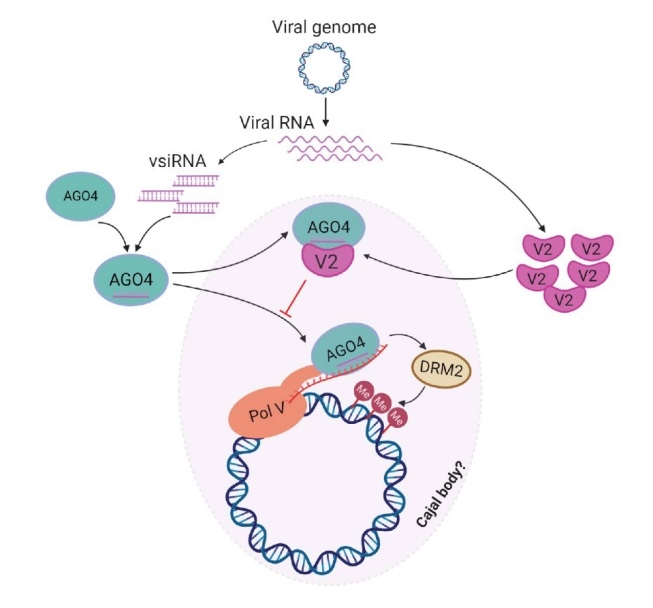New study shows that plant anti-viral DNA methylation occurs in a Cajal body-dependent manner - and is suppressed by a viral silencing suppressor
Scientists at the Shanghai Center for Plant Stress Biology, Center for Excellence in Molecular Plant Sciences of the Chinese Academy of Sciences, have unveiled that a plant virus-encoded protein interferes with AGO4-dependent DNA methylation to promote virulence by targeting the latter in the Cajal body, drawing a functional connection between anti-viral defence, RNA-directed DNA methylation (RdDM), and this nuclear compartment. This study was published on October 16th, 2020 in eLife.
The plant-specific RNA-directed DNA methylation (RdDM) pathway mediates the establishment of de novo DNA methylation, and plays a broadly accepted role in defence against viruses. The RdDM machinery is known to concentrate in the Cajal body, a compartment in the cell nucleus, but the biological significance of this localization has so far remained elusive.
Geminiviruses are single-strand plant DNA viruses causing a major threat to sustainable agriculture and food security worldwide. Geminiviruses replicate through double-stranded (ds) DNA intermediates, which are targeted by RdDM as part of the plant anti-viral defence mechanisms. As a counter-attack strategy, geminiviruses have evolved viral suppressors to manipulate the DNA methylation pathway and promote virulence. The viral V2 protein, encoded by the geminivirus Tomato yellow leaf curl virus (TYLCV), can efficiently suppress DNA methylation on the viral genome, enabling a successful infection. However, the molecular mechanisms underlying this activity of the V2 protein are not fully understood.
Liping Wang and colleagues in Rosa Lozano-Duran’s lab have now discovered that V2 can counter methylation of the viral genome through its interaction with the central RdDM component AGO4, which specifically occurs in the Cajal body. This study shows that AGO4 plays a role in the defence against TYLCV, and demonstrates that V2 interferes with AGO4 binding to the viral nucleic acids to prevent the viral genome from being methylated.
Importantly, Wang’s results indicate that the viral DNA is methylated in a Cajal body-dependent manner in the absence of V2, since abolishment of Cajal body formation by silencing of its signature component coilin drastically reduces methylation of the viral genome. Further supporting this idea, Cajal body localization of the V2-AGO4 interaction is required for the viral protein to exert its activity as a suppressor of viral DNA methylation.
In summary, this study offers novel insight into virus-host interactions and reveals a relevance of AGO4-dependent RdDM and the Cajal body for anti-viral defence in plants. The results obtained in this work can pave the way for the exploration of new breeding targets for resistance to TYLCV and other geminiviruses.
Funding: This study has been funded by the Chinese Academy of Sciences and the National Natural Science Foundation of China.

Figure: Model for the V2-mediated suppression of RdDM-enabled DNA methylation of the viral genome
Link to the article: https://elifesciences.org/articles/55542